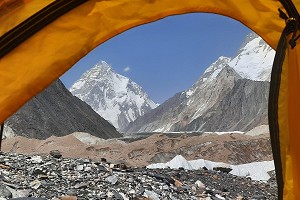
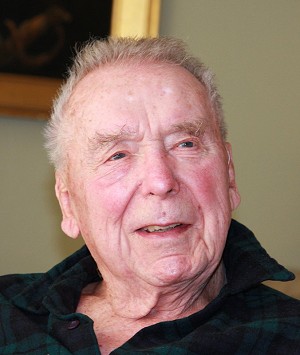
Thanks to their spirit of self-sacrifice, concern for each other, and downright tenacity, seven of the team survived – only Gilkey perished, almost certainly swept away by an avalanche. But it was a close call, not least for Houston who never again put his life on the line on a high mountain. After the Italians reached the summit of K2 a year later, he stopped climbing and devoted himself to his family, medicine and human good.
Houston's great legacy for mountaineers and trekkers emerged from his groundbreaking research in high altitude medicine. The publication in 1980 of Houston's Going Higher: Oxygen, Man, and Mountains at last provided climbers and medics with a clear understanding of the cause and effect of the main types of altitude sickness, together with sound advice on staying healthy.
The majority of climbers and trekkers visiting the Himalaya and other greater ranges experience some degree of Acute Mountain Sickness above the 4,000-metre contour, though for all its scary title this is usually only a couple of days of mild headache. Houston explained why this is so, and detailed the more serious forms of the sickness, notably High Altitude Cerebral Edema (HACE), a swelling of the brain, and High Altitude Pulmonary Edema (HAPE) a build-up of fluid in the lungs. Each year these sicknesses continue to kill those who rush to altitude or do not acknowledge the symptoms, but after Houston there is not much excuse for ignorance. Regularly updated, most recently in 2005, Going Higher is no dry tome.
Charles Snead Houston was born in New York in 1913 and brought up in East Coast privilege. At the age of 12 he walked with his parents from Geneva to Chamonix, reading Geoffrey Winthrop Young's classic On High Hills along the way. The die was cast. While a medical student, he joined the Harvard Mountaineering Club, teaming up with four other putative big names in US climbing – Bob Bates, Bradford Washburn, H Adams Carter and Terris Moore – to form the so-called 'Harvard Five'.
In 1933 he was invited by the more experienced Washburn to climb on Mount Crillon (a near miss) and a year later returned to Alaska on an expedition led by his father, Oscar Houston, to make the first ascent of Mount Foraker. Also on Foraker was the British mountaineer T Graham Brown, with whom Houston climbed in the Alps and, in 1936, co-led an expedition to Nanda Devi in northern India.
The Nanda Devi party was an intriguing mix - four cocky Americans, all members of the fledgling Harvard MC - and four veteran Brits, including the spartan Bill Tilman and Noel Odell, an old Everest hand, who together reached the 7816m summit on 29 July. Houston seemed set for the first ascent, but at the last camp fell ill with food poisoning - a treacherous tin of meat - and descended to enable Tilman to take his place alongside Odell. Tilman recalled: “Bad as he (Houston) was, his generous determination to go down was of a piece with the rest of his actions.”
Houston and Tilman teamed up again in 1950 when Oscar Houston unexpectedly obtained permission to explore the Khumbu valley towards the southern flank of Everest in Nepal, hitherto closed to westerners. Enthralled, the party hiked into the Sherpa village of Namche Bazar and on up the valley of the Imja Khola to Thyangboche monastery. Houston and Tilman prospected further, reaching the Khumbu glacier and seeing the frozen cascade of ice cliffs that bars entry to the Western Cwm. Both thought the icefall too hazardous for laden porters and doubted Everest could be climbed by this route. Three years later, Hillary and Tenzing proved them wrong.
Charlie Houston, however, is most famously associated with K2. He led two expeditions to the giant of the Karakoram; on the first, in 1938, described as a 'reconnaissance', he and Paul Petzoldt reached “The Shoulder” at 8,000 metres via the Abruzzi Spur. It had required a supreme effort, wading in deep powder snow. “I felt that all my previous life had reached a climax in these last hours of intense struggle,” wrote Houston. This paved the way for another American attempt on K2 a year later, a messy affair that gained another 400 metres but ended with the death of its sponsor, Dudley Wolfe, and three Sherpas.
War service over, Houston returned to K2 in 1953 with a strong team, including his close friend and companion from the 1938 trip, Bob Bates. Storm and struggle accompanied the team up the Abruzzi, even so by the beginning of August they were encamped just below the Shoulder and optimistic the summit was within their grasp. Just three good days were needed. But foul weather again confined them to battered tents - the flimsy nylon shelter occupied by Houston and George Bell was torn away completely. In retrospect, Houston was philosophical about their 10-day battering at Camp VIII. “Perhaps it is this conquest, conquest of one's self through survival of such an ordeal, that brings a man back to frontiers again and again.”
On 7 August as the cloud lifted and the climbers crawled out of their tents, the young geologist Art Gilkey collapsed unconscious in the snow. He had developed thrombophlebitis, with blood clots in his left leg. As both a doctor and a climber Houston knew there was really no chance of getting Gilkey back to Base Camp alive, but there was no question the team would not try to save him. Avalanche risk and pitiless weather delayed them for another three days, until, as Gilkey's condition worsened with clots carried to his lungs, descent became imperative.
With Gilkey wrapped in a sleeping bag and the smashed tent, the team began inching him down the mountain in a raging blizzard. All were near exhausted and encrusted in ice. The sick man had just been lowered over a cliff when George Bell, who had frostbitten feet, slipped, dragging his rope mate, the English army officer Tony Streather with him, and dislodging others. Amazingly the five hurtling climbers were halted on the lip of the abyss by the strength and superb belaying technique of Pete Schoening, who also held the weight of the suspended Gilkey.
Houston lay unconscious and would likely have perished had not Bates awakened him and ordered him to climb 50m to the shelter of a camp. Bates, who died in 2007, recalled it thus: “Charlie,” I said with the greatest of intensity, looking directly into his eyes, “if you ever want to see Dorcas and Penny again (his wife and daughter) climb up there right now”. Somehow this demand penetrated to his brain, for with a frightened look and without a word, he turned...and fairly swarmed up the snowy rocks of the cliff.”
Battered and bleeding the party struggled to the nearby Camp VII, then three of them went to fetch Gilkey who had been left anchored by two ice axes. He had vanished - swept away by an avalanche, concluded his comrades. As Kenneth Mason observed in his history of Himalayan exploration Abode of Snow, perhaps the mountain had been merciful. Gilkey's seven companions would never have abandoned him, nor in their exhausted state could they have brought him down alive.
Four days later the team stumbled gaunt and hollow-eyed into the embrace of their tearfully relieved Hunza porters. Houston was at times delirious. At a reunion 25 years later he revealed how close he had come to ending it all above the tricky 'House's chimney'. He feared he would knock his friends off the mountain if he fell. “Better jump off to one side and get it over with,” he'd thought. “I knelt in the snow and said the Lord's Prayer. Next thing I can remember is being grasped by strong arms and helped into Camp IV.”
Houston was deeply affected by the loss of Gilkey and also by a sense of failure. Together with his family responsibilities, these are generally taken as reason he ceased climbing. Yet Houston's first thought had been to have another shot at K2 a year later and he was stunned to find it already booked by the Italian explorer-geographer Ardito Desio. The news, when Achille Compagnoni and Lino Lacedelli reached the summit, came as a depressing blow, and although Houston had permission for an attempt on K2 in 1955, he did not take it up.
On the dictum that 'style is everything' Houston's men win hands down in the story of K2. Theirs had been a bold, lightish-weight push to within an ace of the summit. Desio, on the other hand, laid siege to K2, employing military tactics, 500 porters, and bottled oxygen for his top climbers. The New York Times, in an obituary headline, somewhat ungraciously tagged Houston as the man “who led a failed Himalayan climb”. But most alpinists today would rather 'fail' in the style of Houston than “succeed” like Desio. As Reinhold Messner said of Houston's team: “They failed in the most beautiful way you can imagine.”
Stephen Goodwin
*Charlie Houston's story is well told in a biography by Bernadette McDonald, Brotherhood of the Rope (Bâton Wicks, 2007).
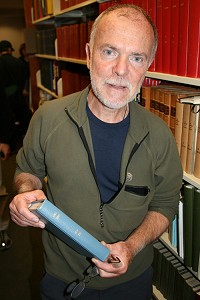
He lives near the Lake District where he enjoys rare dry days on the crag and more usual damp days on his mountain bike.

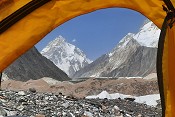
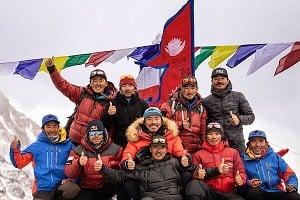
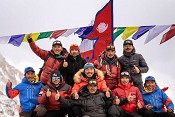
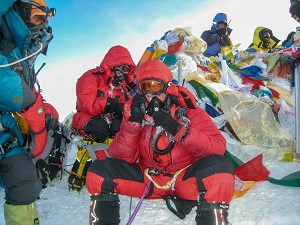





Comments